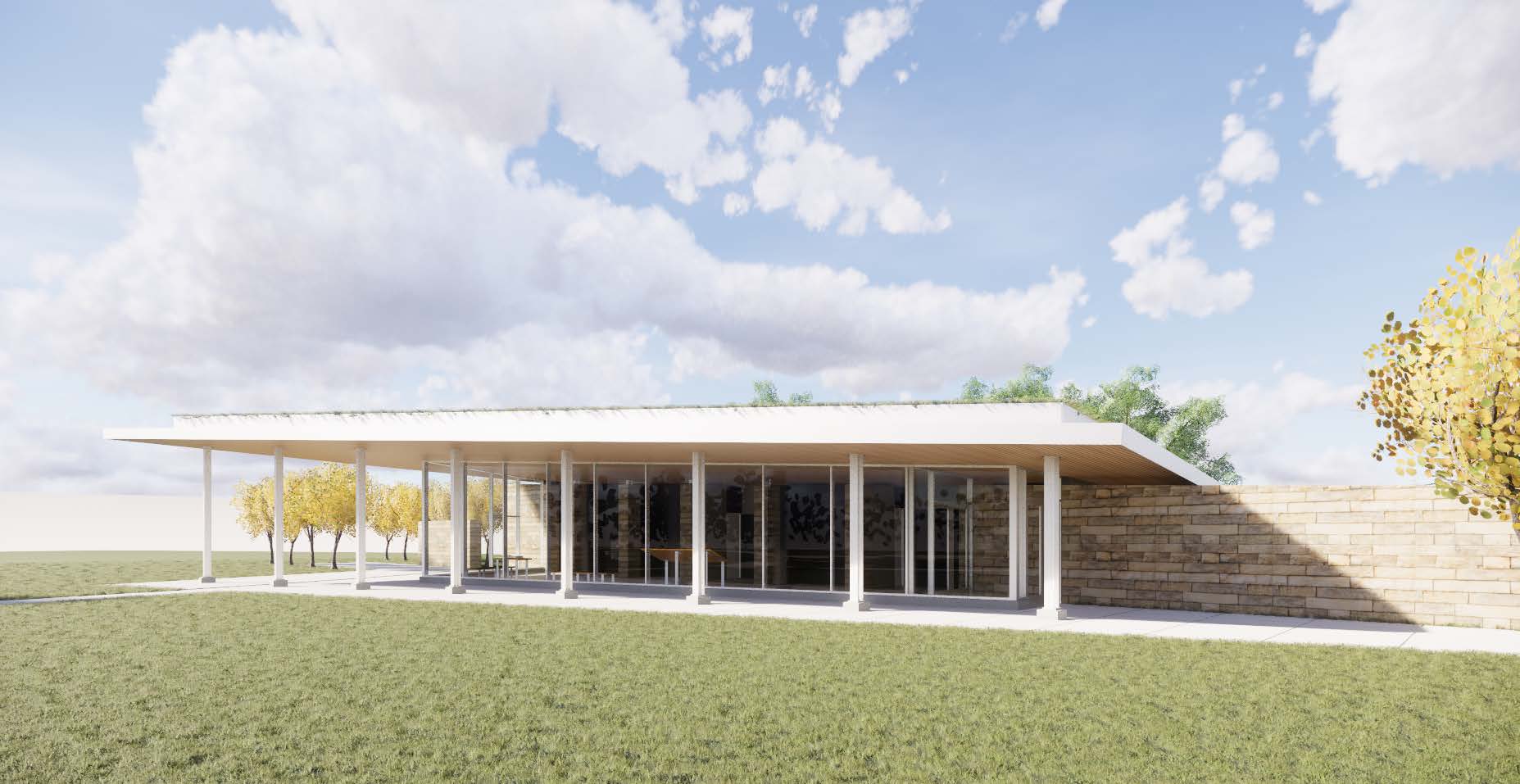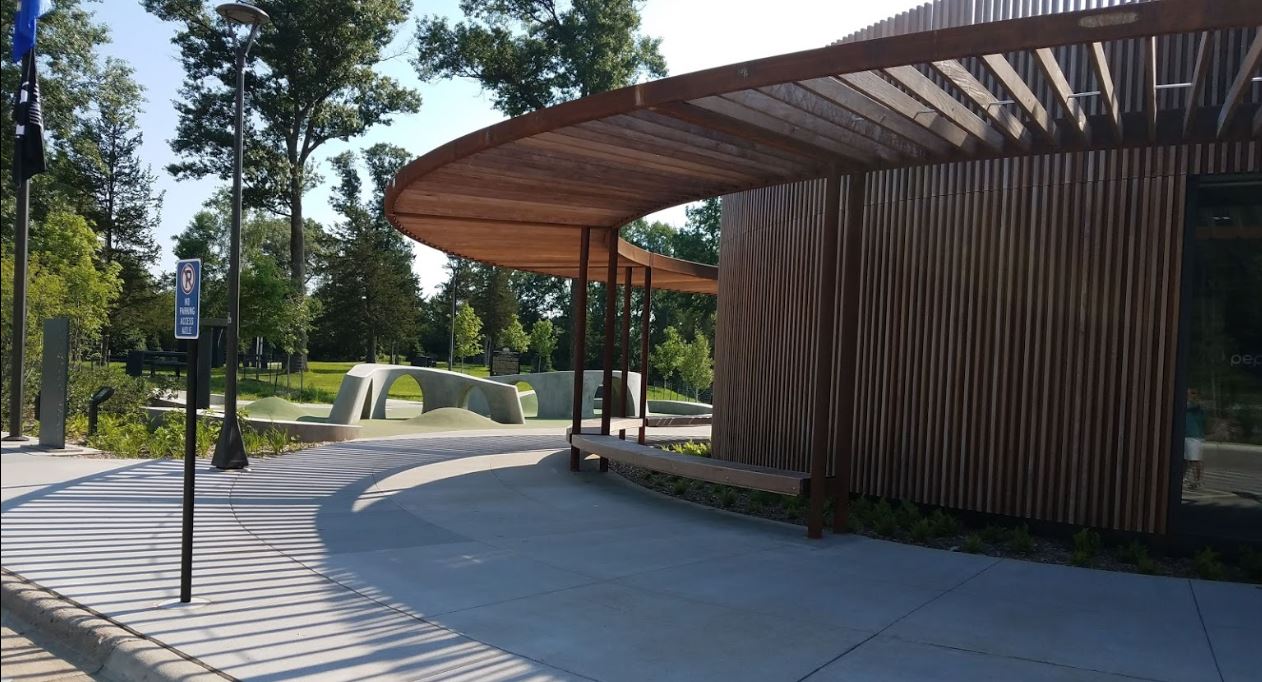By Joseph Palmersheim
More than 20 million travelers visit MnDOT’s 204 rest areas each year.
The rest areas range from modern, open-24-hours-day Class I site to seasonally operated, no-bathroom Class IV sites. Minnesota’s rest areas remain busy with commercial motor vehicles year-round while visits from recreational travelers hit a peak from late spring through MEA weekend in mid-October and through the end of fall color season. There are 51 Class I, 14 seasonal Class II/III and 139 Class IV rest areas across the state.
“Rest areas are essential safety features on the highway system that help address driver fatigue, a major cause of serious accidents,” said Rob Williams, rest area program manager. “Their basic service is crash prevention. Studies indicate that a 15- to 20-minute break improves individual performance, even among sleep-deprived people.”
Other benefits include accommodating trucker hours of service regulations, reducing the need for shoulder stops and supporting economic development.
COVID-19 impacts
Like everything else, the COVID-19 pandemic posed several challenges over this past year to Minnesota’s rest areas.
Collaborating with other state DOTs, MnDOT instituted many COVID-19 mitigation measures at rest area in order to keep them open to the motoring public and to support critical commercial freight movements during the pandemic.
At the onset of the pandemic, this included providing onsite workers with personal protective equipment and using hospital-grade disinfectants every half hour or immediately after multiple people leave a rest area building. The sanitation routine is still in effect, along with mask requirements, social distancing and asking people to “be quick.”
These mitigation measures will remain in effect until the release of Minnesota Department of Health guidance saying they are no longer needed.
Also, MnDOT was one of a few states to permit food truck operations at rest areas during the period when restaurants were closed early in the pandemic. Ordinarily, the ability to permit such commercial activities at rest area is prohibited by federal and state law; however, through the Federal Highway Administration and a Governor’s Executive Order, this prohibition was temporarily waived.
Clear Lake and Des Moines River rest area replacement, improvements

This rendering shows what the Des Moines River rest area in District 7 will look like when construction finishes. The new structure replaces a 50-year-old building, and includes a green roof and expanded parking options. Submitted photo |
Crews are working on building replacement, site improvements and ADA work at the Clear Lake and Des Moines River rest areas in southern Minnesota. This rest area pair is west of Jackson on I-90 in District 7.
These rest areas were approaching 50 years of age, functionally obsolete and in poor physical condition, said Robert Williams, rest area program manager.
Both rest area buildings will feature energy-saving green roofs. These reduce cooling and heating loads by 6 percent, saving $30,000 over the 50-year life span of the facility. The lifecycle cost of the green roofs is comparable to that of an EPDM roof typical on many MnDOT buildings.
“Contextually, the green roofs recall the sod house construction historically common in the area and the use of sloping roofs, earthen berms and walls will control snow drifting in key areas of the sites,” Williams said. “Large bird-safe glass windows with large roof soffits will also contribute to facility energy efficiency.”
A separate pavement project will follow. This second project involves rebuilding the car and truck parking lots, expanding truck parking lots, rehabilitating ramps, and replacing parking lot and ramp lighting systems.
Thompson Hill Travel Information Center improvements
Reconstruction of vehicular pavements, replacement of parking lot lighting and ADA improvements will begin this construction season at the Thompson Hill Travel Information Center, which serves travelers on I-35 in Duluth. The building will remain open to the public during construction.
Goose Creek Rest Area honored

The Goose Creek Rest Area project in the Metro District won an Honor Award from 2020 AIANY + ASLANY Transportation + Infrastructure Design Excellence Awards. This photo shows the curving pergola and children’s playlot. Submitted photo |
The Goose Creek Rest Area project was honored at the 2020 AIANY + ASLANY Transportation + Infrastructure Design Excellence Awards.
The project was one of eight transportation and infrastructure projects from across the country awarded by an independent jury of architects, designers, critics and planners. Goose Creek won an Honor Award, the highest level of achievement bestowed by the jury. Each project was evaluated based on its commitment to sustainability, community engagement and civic architecture. This national competition was sponsored by the American Institute of Architects, New York and American Society of Landscape Architects, New York Chapter. This is the second award Goose Creek has received since it was reconstructed.
Floodwood Rest Area closed
MnDOT, working in partnership with the city of Floodwood, is no longer running the Floodwood Rest Area facility as a rest area.
The state transferred ownership of the facility to the city of Floodwood on April 5. The city plans to develop the building and parking area into a future asset for the community. The building, a historic train depot, proved difficult to maintain because it was not designed to function as a rest area, Williams said. That, compounded with the minimal usage of the site, made it not cost effective to operate.
| 


